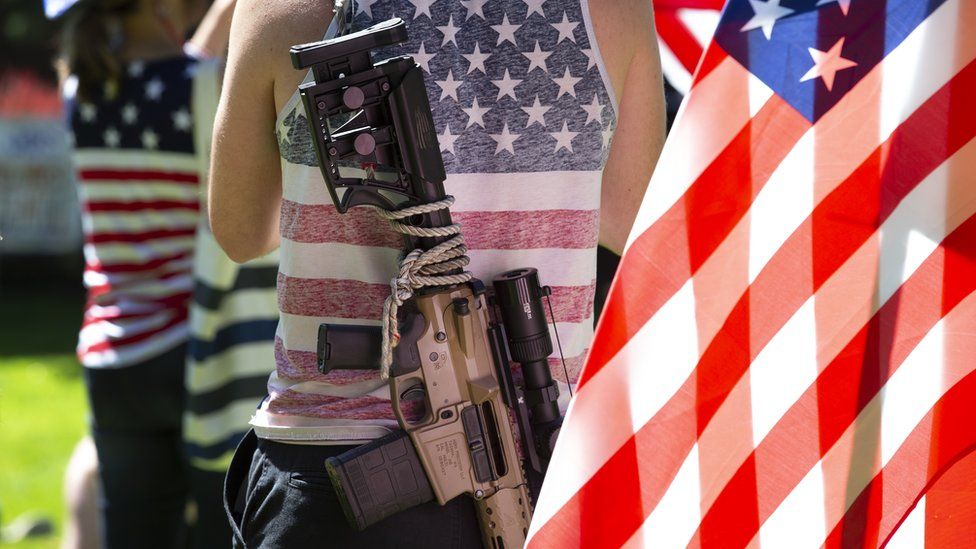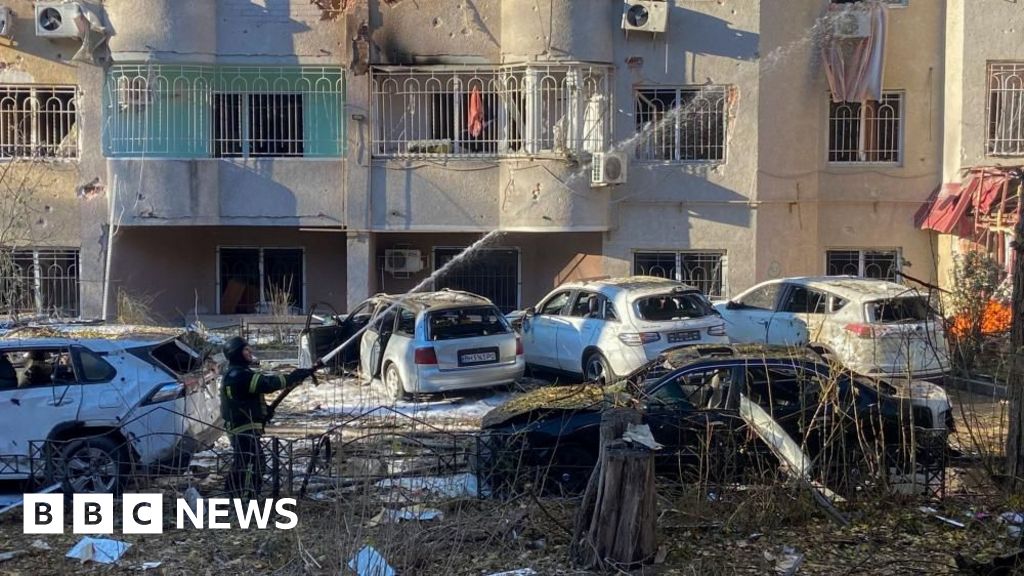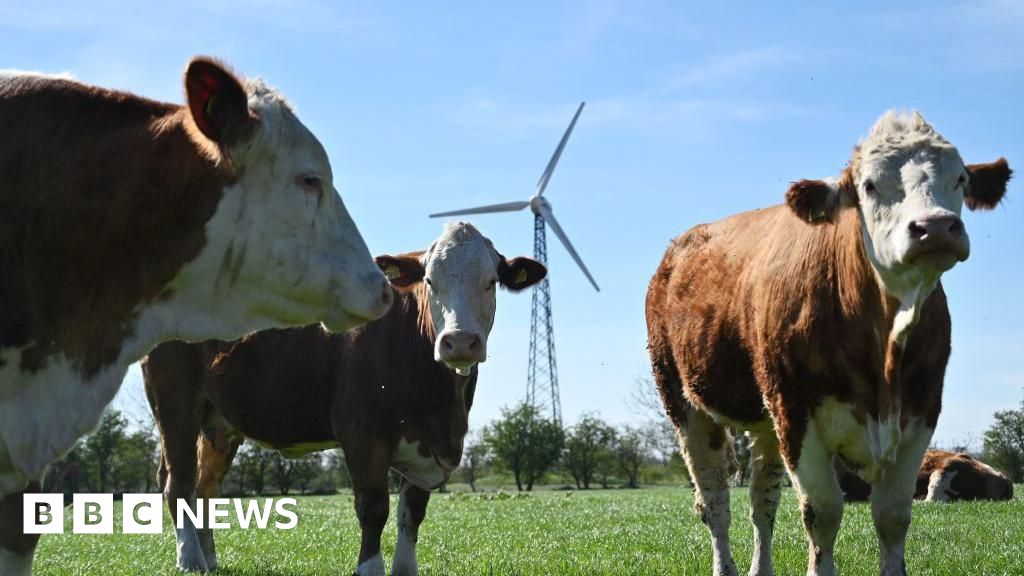ARTICLE AD BOX
By Max Matza and Anthony Zurcher
BBC News
 Image source, Karen Ducey
Image source, Karen Ducey
There is no federal ban on assault weapons
Last month, US President Joe Biden signed a landmark gun-control bill into law.
While the legislation, which was passed with bipartisan support, has many limits, it was a step in America's efforts to tackle escalating gun violence. Meanwhile, the Supreme Court issued a decision that cast the future of more strict limits on gun ownership in doubt.
So where does gun control go from here? Here's a look at some solutions that gun-control advocates and gun-rights proponents say could help stop escalating gun violence - and our North America correspondent Anthony Zurcher assesses their chances.
The future of red flag laws
Red flag laws, also known as Extreme Risk Protection Orders, allow police to temporarily seize legally owned guns from people who a judge has ruled to be a danger to themselves or others.
A judge's emergency order can be issued even in cases where a gun owner has no criminal record or history of mental illness.
Opponents say this violates the right to due process, as the orders can be issued by a judge without the subject present to object.
Image source, SOPA Images
Image caption,Protester holds a sign against red flag laws
What's happened? There are 19 states and Washington DC that have red flag laws. Only two of those states - Florida and Indiana - have Republican-controlled legislatures.
The law just passed by Congress does not establish a national red flag law, but includes $750m in incentive payments for states to set up their own.
What's next? More states might be willing to set up their own red flag laws with the federal government funding. However, these laws will only be effective if high-risk individuals are quickly identified and firearms removed from them. Meanwhile, it could also lead such individuals to sue, citing the constitutional right to own firearms. This could certainly lead to the more restrictive laws being struck down by a federal court system that is increasingly sympathetic to gun rights.
Growing Gun-Free Zones
Government offices, hospitals and transport centres commonly ban guns under federal laws.
It's unknown exactly how many so-called gun-free zones exist in the US.
Gun-rights advocates argue that these zones are easy targets for mass killers. They point out that places with extremely restrictive gun laws see high levels of violent crime committed using illegal guns.
Image source, Eze Amos
Image caption,Certain places in the US, like hospitals or government buildings, are gun free zones
What's happened? In the wake of the Supreme Court decision striking down New York's gun law, the governor said she plans to expand the types of locations that qualify as a "sensitive" site where guns are banned.
What's next? Gun-free zones are an idea that leaves both sides of the gun debate unsatisfied. Firearm rights activists believe they don't work and may even encourage violent criminals. Gun-control advocates see them largely as a half measure that is of little help in a nation awash in gun violence.
Increasing scrutiny for younger buyers
With a few exceptions, federal law bars people under 21 from purchasing a handgun - though not a long gun like a rifle or shotgun.
But many mass gunman - including most recently in Highland Park, Buffalo and Uvalde - have been able to legally purchase weapons despite being 21 or younger.
In several attacks, the gunman had previously exhibited behaviour - such as making violent threats - that may have prevented him from passing a background check and buying a gun. But that information had not been submitted to the FBI's background check database.
Image source, Brandon Bell
Image caption,Father and son attend the National Rifle Association's annual conference
What's happened? The new federal gun law also adds juvenile and mental health records of buyers 18 to 20 years old to the FBI's background check database. It also increases the length of time allowed for a youth background check to 10 days.
What's next? Background checks for under-21s are probably here to stay. But although there is evidence that young men are most likely to commit mass shootings, blanket age restrictions are likely a non-starter. Some states have passed laws to try to have a minimum age for buying certain kinds of weapons. When California's age restrictions were struck down by a federal court, it put the future of those kinds of laws in jeopardy.
Buying guns back
Some police departments in the US choose to use some of their operating funds to pay people to voluntarily surrender firearms they no longer want. Private citizens, fed up with gun crime, have even taken to crowdfunding their own gun buyback programmes.
Proponents of buybacks say they are a convenient way to get unwanted guns off the streets, including firearms acquired through the estate of a deceased relative.
Image source, Getty Images
Image caption,There are more guns in America than people
What's happened? In June, the city of Miami offered residents cash for their guns - and said any guns taken off the streets would be sent to Ukraine to help in its fight against Russia.
Other cities have offered groceries and gift cards in exchange for unwanted guns. Many guns used in violent crimes are stolen or otherwise illegally owned, and experts say that removing guns from attics and closet storage spaces may help keep them out of the hands of criminals.
What's next? Gun buyback programmes have the advantage of being purely voluntary, avoiding the ire of gun-rights proponents who oppose any rule that limits the right to carry arms. There are currently more privately owned guns than there are Americans, however, with millions more being manufactured every year. Any buyback system, while it may be good publicity for police departments, is like trying to empty the ocean with a thimble.
Banning assault rifles
Semi-automatic rifles, commonly known as assault rifles, include popular AR-15s and AK-47s. Capable of firing high-calibre bullets that are larger and travel faster than rounds fired from a pistol, they are much more lethal and have been used in the most deadly mass shooting attacks throughout modern US history.
Image source, JASON CONNOLLY
Image caption,A makeshift memorial after another mass shooting
What's happened? Assault weapons and magazines capable of holding more than 10 bullets were banned in 1994, but the Republican-controlled Congress allowed the ban to expire in September 2004. Experts disagree on the effect those 10 years had on overall levels of criminal activity.
In the absence of federal laws, seven states and several cities, including Highland Park, have stepped in to ban certain types of high-powered semi-automatic rifles. Still, an estimated 20m assault rifles are privately owned right now.
What's next? Several laws banning assault weapons have faced legal challenges. Although lower courts have upheld the bans, the Supreme Court recently instructed those courts to reconsider their decisions. It may only be a matter of time before the Supreme Court itself rules assault weapons bans are unconstitutional.
More rules for gun owners
Although there is no federal law requiring any training to own a gun, some states include mandatory training courses for certain elements of ownership.
For instance, concealed carry (carrying a hidden gun on your person in public) requires a permit in some states - with classes required to get one.
Studies also find that gun owners are far more likely to have their guns stolen, or used by a child, if they are not locked away.
Image source, JASON CONNOLLY
Image caption,There is no federal requirement for gun training courses
What's happened? A Supreme Court decision from late June struck down a century-old provision in New York that required handgun owners to convince a licensing agent that they have a special need to carry a gun outside of their home.
The removal of this barrier is expected to lead to state laws requiring permits for certain types of guns to be struck down as well.
Thirteen states set laws on how some firearms should be locked away. State rules also exist to punish people if their guns fall into the wrong hands, such as a child or a convicted felon.
What's next? Trigger locks, gun storage requirements and training classes have all been suggested as means to encourage responsible gun ownership. Given the Supreme Court's ruling that there is a constitutional right to own a firearm, such measures will be closely scrutinised by lower courts as to their actual effectiveness and the burden they place on those seeking to exercise their rights.
Arming schools
Opponents of gun control measures say that teachers should be trained to use a firearm.
The father of a teenager killed at Marjorie Stoneman Douglas High School in Parkland, Florida, has been one of the most vocal champions for arming teachers.
Some gun advocates also say that pupils should be allowed to carry arms at school. Older, mostly rural, gun owners still fondly recall bringing their guns to school in their youth to hunt at lunch.
Image source, Mario Tama
Image caption,Students evacuate a California school after a gunman killed two people
What's happened? In early June, Ohio's governor signed a bill reducing the amount of training teachers need to carry a gun in classrooms to just 24 hours.
The sale of bulletproof backpacks, which can theoretically be used as protection during a shooting, spiked in 2012 after the attack on Sandy Hook elementary school in Newtown, Connecticut.
What's next? With school shootings becoming a regular feature of American life, communities are struggling to come up with novel ways to address the crisis. Very few teachers, however, seem interested in taking up arms. In Texas, only about 250 of the 320,000 public school teachers have applied to be part of the state's armed "school marshal" programme.
Turning schools into fortresses
Many conservative gun owners say a necessary solution is "hardening" schools - essentially turning soft targets into fortresses.
According to Republican champions of this policy, government buildings and other potential terrorism targets are already fortified - so why not schools?
Armed guards, locked doors, cameras and other security measures would become the norm under this plan at schools, shops, theatres, churches and other public venues.
Image source, The Washington Post
Image caption,An officer watches students in a school hallway
What's happened? Many schools across the US already have armed guards on campus. The guards are often affiliated with the local police force, and are referred to as "school resource officers".
Despite the presence of an armed guard at the Robb Elementary School in Uvalde, Texas, it still took police over an hour to confront the rampaging gunman. The officer stationed in Parkland also failed to confront the gunman, and was later charged with child neglect.
The new gun bill provides $300m to schools to boost their physical security, and even more money for schools to expand their mental health services.
What's next? A common refrain among those in favour of tightening security is that schools should be as difficult to enter with a firearm as an airport.
Of course, there are only about 500 commercial airports in the US, while the nation has approximately 130,000 schools.
Crucially, schools would need a single point of entry in order to restrict who can come and go. That would be difficult to maintain for buildings where hundreds frequently come and go, or on campuses with multiple buildings.
The amount of resources it would take to staff and secure each building is well beyond the reach of even the most ambitious government funding programme, let alone the $300m in school security funding in the new congressional gun law.

 2 years ago
24
2 years ago
24








 English (US)
English (US)